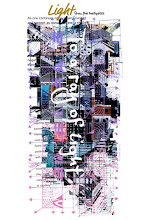From the pseudo-3D images created by red-blue glasses developed in 1853 to the advancements in visual technology until the 1990s, progress was not particularly rapid. However, since the 1990s, with personal computers becoming accessible to individuals, technological advancements have been accelerating year by year. Looking at this within a 10-year framework, it becomes easier to see the technologies that will become mainstream in the next era. A 10-year span corresponds to students becoming young professionals and young professionals advancing to become mid-level employees. This is how new generations develop and evolve existing technologies into new ones. Thus, it leads to predicting the trajectory of advancements, even up to the development of drone fog.
Around 1850s
【Visuals】
・Pseudo-3D photographs using red-blue glasses are invented.
1930s
【Visuals】
・Black and white television broadcasting begins in the UK.
1950s
【Visuals】
・Color television broadcasting starts. In the US, it begins in 1954, and in Japan in 1960.
1990s
【Visuals】
・Personal computer ownership becomes widespread, enabling the creation of 2D and 3D computer graphics and videos.
2000s
【Visuals】
・Broadcasting 2D and 3D computer-generated and live-action videos becomes mainstream on television, computers, concerts, and live events.
2010s
【Visuals】・Projection mapping, 3D holographic displays, virtual reality (VR), and augmented reality (AR) emerge, projecting pseudo-3D images in both the real and virtual worlds.






0 コメント